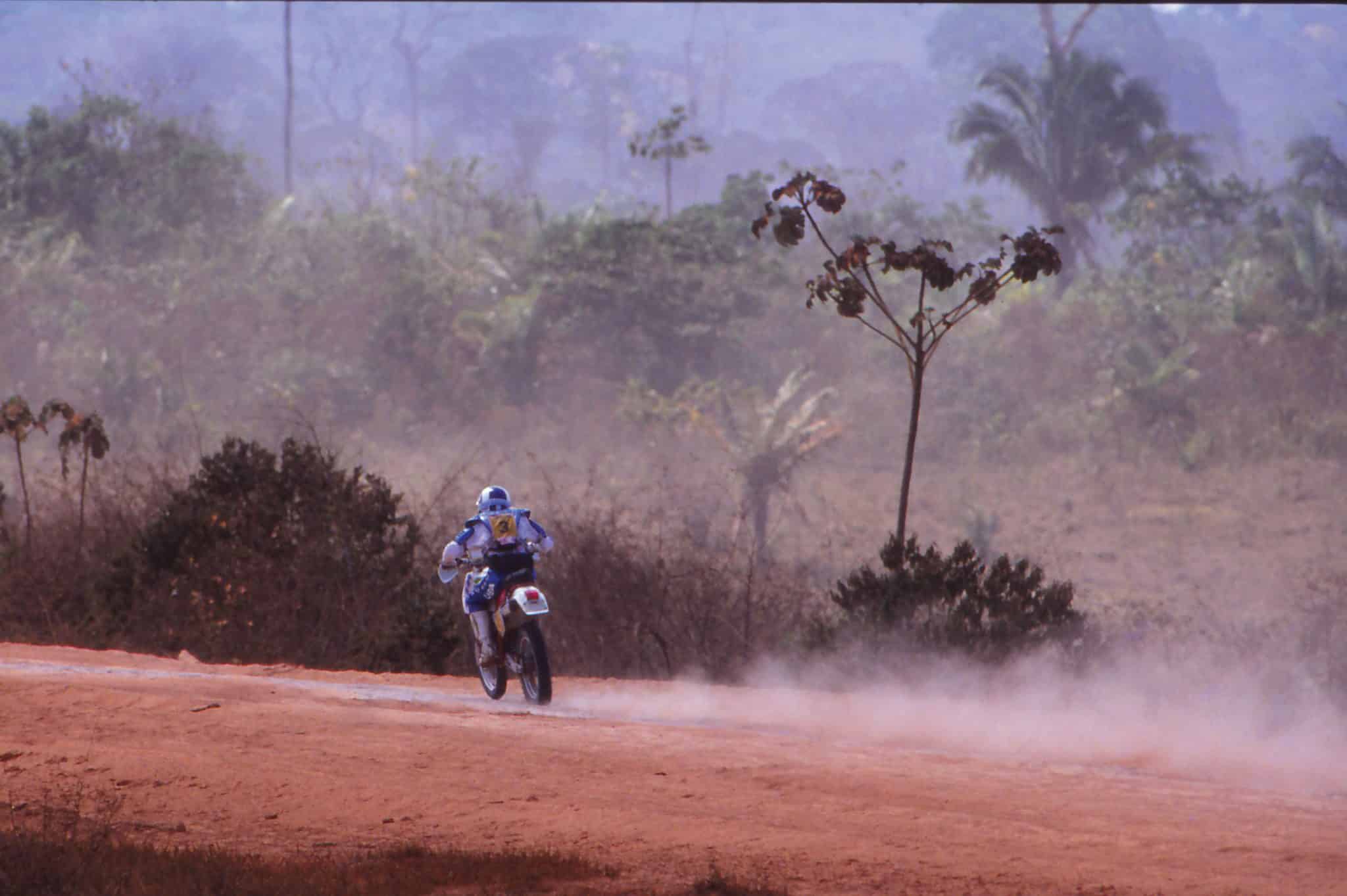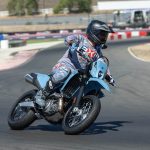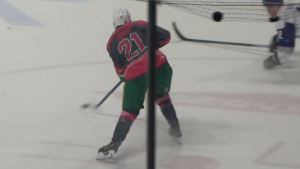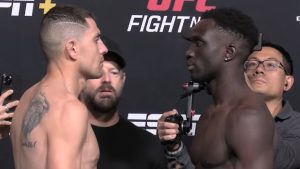
1988 INCAS RALLY: MALCOLM SMITH’S PERUVIAN ADVENTURE
By Joyce Smith
Photos courtesy of Acerbis
Editor’s note: In 1988, Malcolm and Joyce Smith traveled to Peru to attend the Acerbis Incas Rally—Malcolm as a rider and Joyce in a support role. During the 10-day rally, Joyce logged a journal of the experience exclusively for Dirt Bike Magazine. For whatever reason, the story never ran. So, belatedly, we now present the story as written by Malcolm’s wife, Joyce, in 1988.
Malcolm Smith was no stranger to rally. Earlier in 1988 he had driven a Range Rover to fourth place in the Paris-Dakar Rally.
Dear Dirt Bike,
As promised, I kept a journal of the Acerbis-sponsored Incas Rally. Many years have passed since Malcolm last raced a bike in a big event like this, but I guess the spirit never dies. Peru was really high on my must-see list, and I jumped at the chance to travel there with Malcolm. Here’s our story.
PRE-RACE DAY
We arrived at Arequipa the afternoon before the flag dropped for the second annual Incas Rally. It was the dry season, and the land was dusty and brown. From the plane, I could see the snow-capped peaks of the Andes and the serious cross-grain terrain in the lower regions. There were only a few hours left before impound, and the Acerbis supply truck was rapidly running out of spare parts. A telex was sent to the U.S. for two cases of pre-mix to be delivered one week later at the halfway point. Most riders were on KTM 350s and 600s. Acerbis arranged for the KTMs and made them available to the riders on a rental basis. Most of the bikes had enormous tanks, and some even had saddle tanks to carry the required 7 to 8 gallons of fuel. Final adjustments were made, favorite goodies like Barkbusters handguards were added, and start numbers were pulled. Malcolm’s number was three, Scot Harden’s was 10 and Ron Lawson was eight.
As the riders gathered for dinner, the talk centered mostly around the altitude. The rally required a large amount of strength and endurance. After riding all day at altitudes that went from low to extremely high and back to low again, the riders had to service and repair their bikes, get some sleep, and wake up early in the morning for 10 straight days. Each day’s event generally started at the main town square, and the riders proceeded from there by following their road books.
The first portion of each day’s ride was a transit section, and the riders had the maximum allowed time to cover it. For the second portion, the riders made a new start on a timed special test section with known and secret checks. After that, there was another transit section back into town.
Course markers were not used for the rally. The riders were guided by the road book, which supplied total, special test and turn mileage (in kilometers). The book was taken apart and then taped page by page, end to end, and rolled up on a roll chart to be mounted on the handlebar. Each winner of the daily special test received a $500 purse. The overall winner (by total elapsed time) took home $5000.
DAY ONE
The noon start made day one a short, get-to-know-the-program day. This stage took the riders to 10,000 feet. Being so high up and close to the equator makes for an odd mixture of temperatures. In the sun you were hot, yet in the shade you needed a jacket! Flags representing the entered countries were flying in the breeze as 68 riders started at 60-second intervals. The bikes swooped in a large circle around the town plaza under the watchful eyes of 15,000 well-dressed Peruvian spectators.
Malcolm: “We were riding on old roads. It was fast, and there were silt holes. I had problems with navigation since I couldn’t see the roll chart when the bike was banging around so much.” (Malcolm later checked Paris-to-Dakar winner Edi Orioli’s roll chart and found that the turns were marked by a heavy magic marker for easier spotting when the bike was jumping around.)
Toshi Nishisyama (Japan): “I enjoyed today very much. My only trouble was my technique with the dust. My bike still needs more adjustments.”
Scot Harden: “It was so dusty, I couldn’t pass.” (Harden received a penalty for arriving one minute late at the special test start.)
Walter Surini, day-one winner (Italy): “I rode all out all day and took three closer-to-God chances.”
The terrain varied wildly, from the jungles of the Amazon to the peaks of the Andes.
DAY TWO
On the second day the rally reached 14,000 feet. It was a long, miserably cold day. Riders put tape over their helmet vents and wore ski masks and gloves. A 1200-foot-long rock-strewn tunnel disoriented the riders. Because the tunnel curved to the right, they couldn’t see the end of it, and many of them crashed into the wall. Few riders had any knobs left on their tires by the end of the day, and new treads had to be mounted.
Each night the organization stopped in a different village with great enthusiasm from the local population. Many of the same routes and destinations were later used when the Dakar Rally was held in South America.
DAY THREE
This was one of the most beautiful days of the rally and the second longest. The riders crossed frozen rivers on their way to the top of the Altiplano (the high Peruvian plateau that stretches across the country).
Australian champion Steve Chapman suffered from the altitude and required oxygen. After that, he had to take an oxygen bottle with him whenever the day’s ride reached a high altitude. This day’s event ended at Cuzco, the second base camp of the rally.
Edi Orioli, who won day two, led the pack at the early 6:01 a.m. start (the winner of the previous day’s special test starts first). Peruvian Eduardo Belmonte took the checkered flag by 3:47 minutes. Acerbis organized a mobile headquarters that could accurately compute the riders’ times and positions. Results were printed every day.
The Incas Rally was populated mostly by European riders. Local hero Roberto Belmonte was the exception.
DAY FOUR
This was the most technical day of the rally. It started at the antiquated Plaza des Armes at 10,000 feet in Cuzco. Everything about this city is old, like the narrow and winding cobblestone streets. The riders arrived at a photo podium on one side of Cuzco’s lovely square, and then promenaded around to the opposite side where they took the flag. Vendors selling Peruvian crafts, blankets, jewelry, alpaca sweaters and such delicacies as whole barbecued guinea pigs filled the sidewalks. While taking a ride to the first check, I was able to see some of the ancient, tumbling remains of Inca civilization that are perched high on the sides of terraced mountains. We made it just in time to see Walter Surini of Italy pass by in first position. Scot Harden came in fourth and Malcolm sixth.
DAY FIVEThe rally wound down from the Andes into the tropical Amazon Basin, where the riders traveled through exotic jungle terrain. Colorful butterflies and birds populate the banks of the Urubamba River, which is spanned by a large suspension bridge. The high altitude caused problems for several riders as they climbed back towards the peaks of Cuzco. All of the riders were pleased they would have a free day before the rally continued.
The world was well represented in Peru. Malcolm hangs out with Australia’s Geoff Eldridge and Japan’s Toshi Nishisyama.
DAY SIX
A terrorist group called “The Shining Path” had blown up three of the bridges the rally planned to use. The organizers asked the riders not to stop for anyone unless they were absolutely certain it was a real policeman. The American riders covered any USA symbols on their helmets, bikes and clothes, and the day passed without incident. One of the more interesting entries, Australian Alan Cunynghame’s “Buick” (a prototype V-twin 650 Moto Guzzi), bit the dust when the frame cracked in half. That night, the rally ended in a Peruvian army camp high in the mountains at the little town of Andahuaylas. The town doesn’t get many visitors, and it welcomed the riders with open arms, showering them with flowers and kisses from the pretty girls. The mayor held a fine dinner for the competitors.
Scot Harden eventually finished third overall.
DAY SEVEN
This was the longest day of the rally. The course took riders through a high-mountain region that is the grazing ground for thousands of vicuna, an animal that resembles a small llama. Organizational problems ended the special test after 155 miles; there was no gas for the riders and the support helicopter. Scot Harden and Malcolm were running third and fourth overall.
Franco Acerbis spared no expense in putting the event together. At the time, he viewed the Incas Rally as a rival to Paris-Dakar in the world spotlight.
DAY EIGHT
This was a short run through the Peruvian desert. Fast roads and large areas of shifting sands required a choke-on, wide-open approach. The day’s run lasted only one hour! The finish was at the beautiful seaside resort of Paracas, and most of the riders went swimming before indulging in a lavish banquet. Police later escorted the competitors 50 miles inland to Ica.
Ron Lawson was the top-placing American rider of the day with a fourth. Scot and Malcolm were still in third and fourth, and Italian Walter Surini maintained a half-hour lead.
Walter Surini was the winner of the Incas Rally that year. The event was held three times.
DAY NINE
The last full day of the rally began in heavy fog and blinding dust. A high tide made the beach section impossible to negotiate, so the support helicopter stopped the race until the tide turned. Navigation was extremely difficult, and most of the riders reported that they had felt lost during the day. Each bike rental contract included a $1000 damage deposit. American Gary Dosky used that up quickly when he hit a square-sided washout and ruined his bike!
At the midway point, the riders enjoyed a day off in Cuzco, where many of them got to explore Machu Picchu.
DAY 10
A long three-and-a-half-hour transit on the Pan-American Highway brought riders to a special motocross track laid out in the desert along the beach. The event was scheduled to be six laps around a 5-kilometer course with a live-engine mass start. After the practice lap, riders returned to the start line to protest the course. Deep silt beds covered large boulders in narrow canyons, and the dust was so thick that the spectators couldn’t see the riders. The organizers acknowledged the problem and changed to one-lap timed races with riders departing at one-minute intervals.
EPILOGUE
The Incas Rally was a grand motorcycle adventure. It gave enthusiast riders challenging competition in a truly spectacular setting. And like other events of this kind, it provided a unique opportunity for international friendship that transcended any language barriers.











